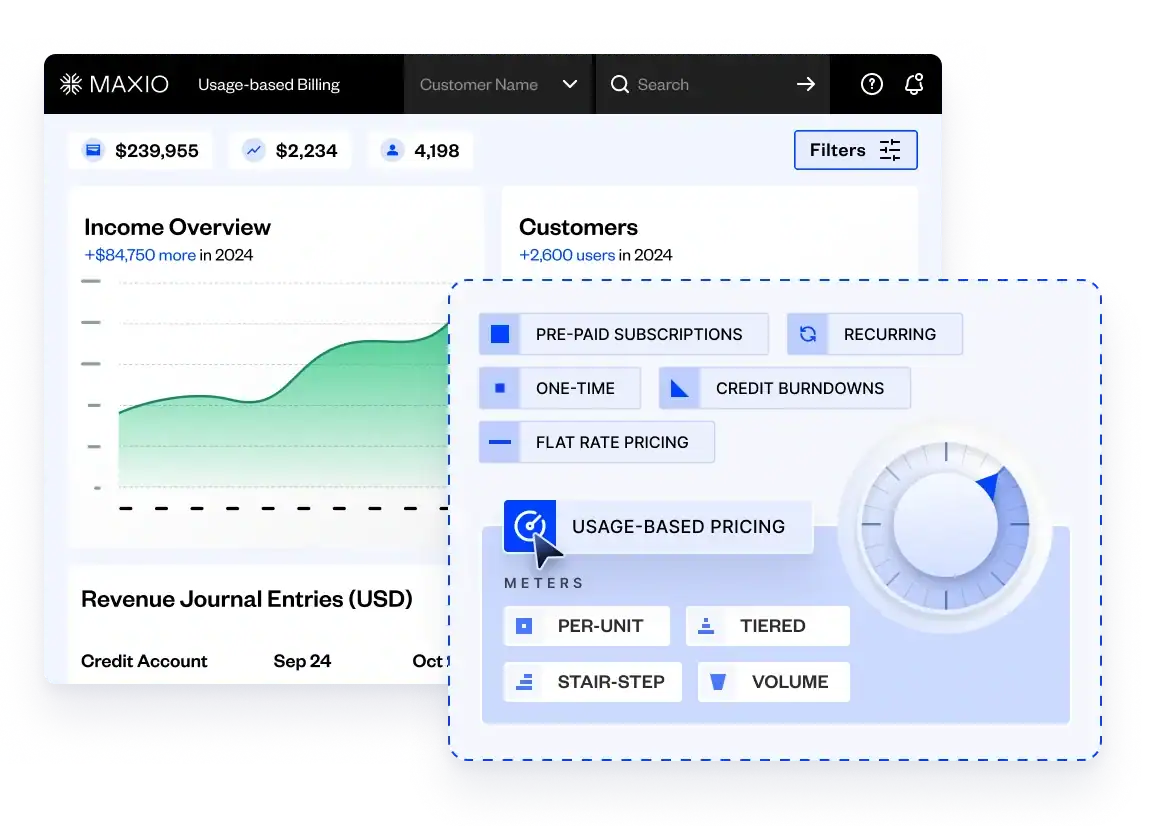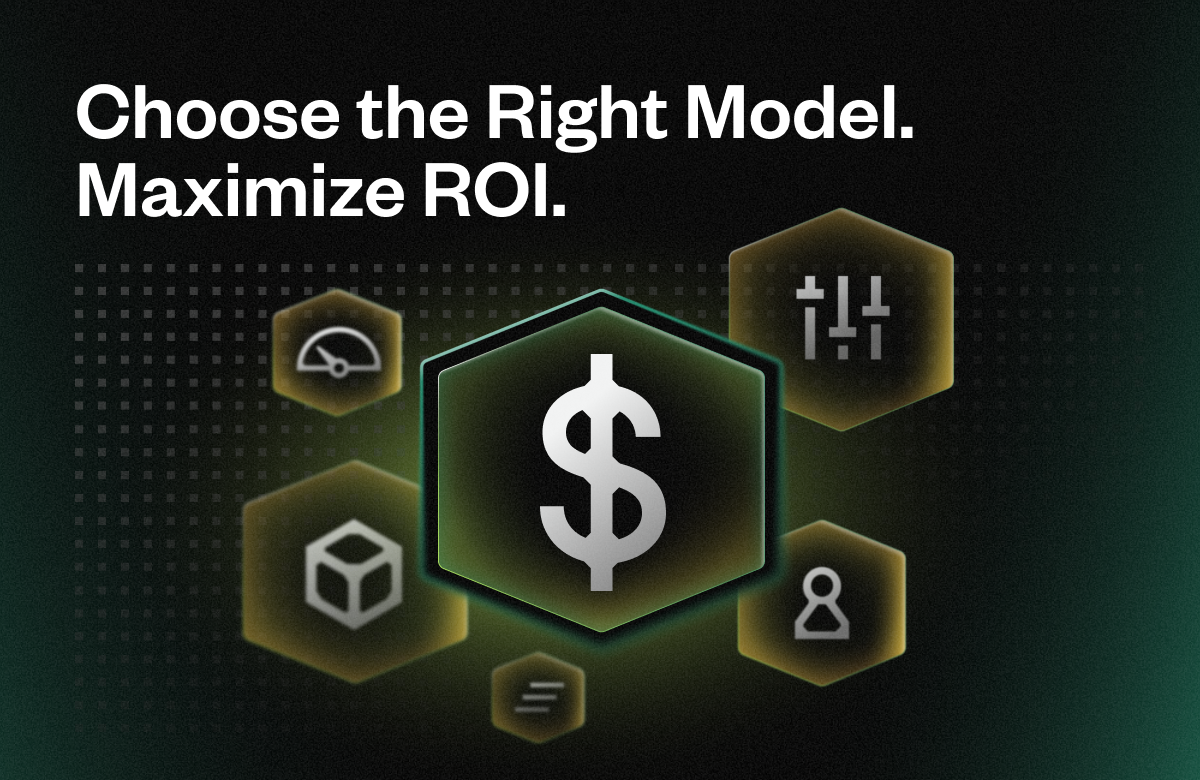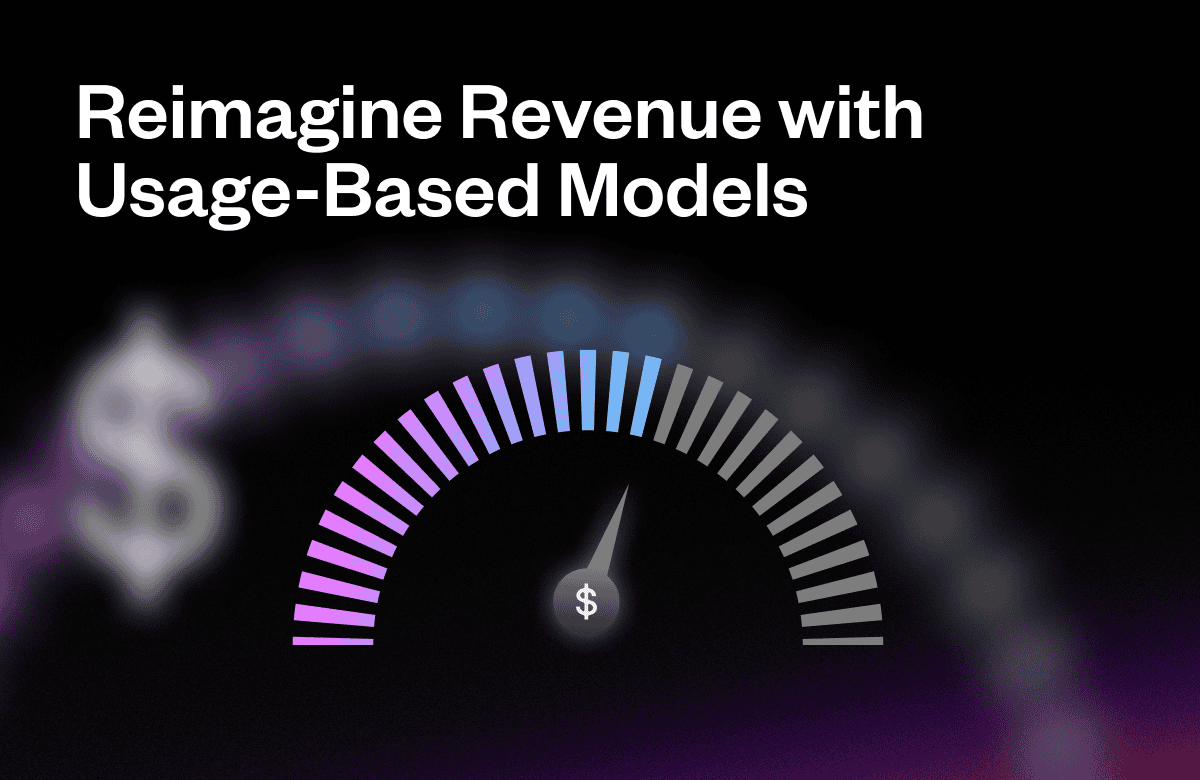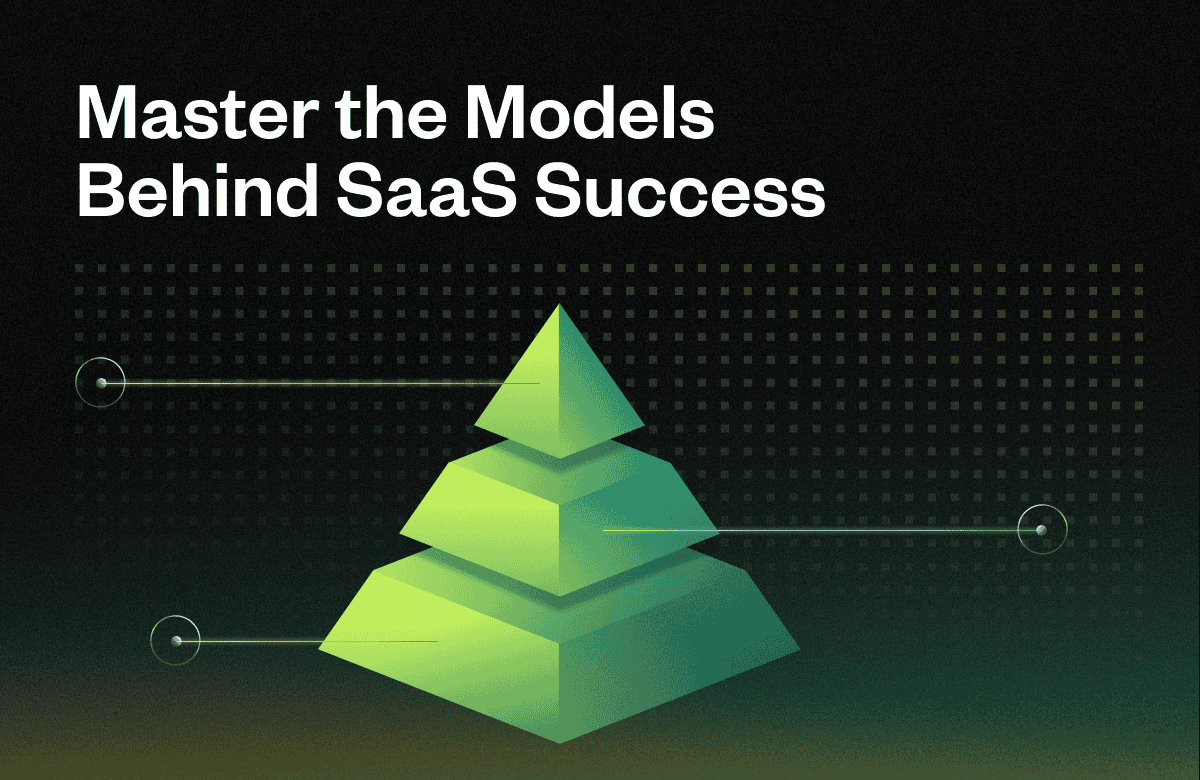The subscription-based pricing model is not just a trend or an industry standard. It’s one of the most profitable pricing models for software companies.
A KeyBanc survey of 100 software companies shows a median gross profit margin of 80% on subscription or SaaS revenue. In fact, only about 10% of respondents reported a profit margin of 60% or lower on their subscription revenue.
The benefits of subscription pricing are clear, but it’s still challenging to narrow in on the right price and billing model for your SaaS. Businesses need price points that correlate to the value of their products, as well as pricing strategies that appeal to their customers.
While narrowing in on the right pricing, you need to think about your customer needs, the competition, and your bottom line. Then, you need to identify benchmark metrics that help you track the success of your subscription business.
With so many moving parts, it can be hard to know where to start.
To help you out, this guide looks at the strengths and challenges of subscription pricing. Then, it outlines several different pricing models and provides tips on how to manage subscription-based pricing as your company grows.
What is a subscription-based pricing model?
A subscription-based pricing model is when your clients pay a recurring fee to use a product or service. This is typically invoiced as an annual or monthly fee.
This model is very popular with both SaaS and streaming service providers—think Spotify, Netflix, and Quickbooks. However, businesses ranging from car washes to HVAC companies to pest exterminators also use subscription pricing models to bring in extra revenue.
Subscription pricing typically leads to greater retention in your customer base, lending a degree of predictability to your revenue stream. Because of this, the subscription based pricing strategy has become popular in many different industries. But don’t let its growing popularity make you think that subscription pricing is simple.
In fact, this pricing model can be very complex. You have to ensure that it works well with your business model. You also have to consider software development, maintenance, and customer acquisition costs, and the number of users you need to cover those costs. You then have to make decisions about pricing tiers and which type of pricing model you want to use. Then, of course, you have to consider subscription lengths, add-ons, and inclusions.
Benefits of a subscription pricing strategy
Subscription pricing has become popular for good reason. It offers a range of benefits that can help businesses grow steadily while building lasting customer relationships. When done right, this approach not only supports reliable income but also makes it easier to connect with customers and adapt to their changing needs. Here are some of the key advantages of using a subscription model:
Ensures a predictable recurring revenue stream
Subscription pricing gives businesses steady, recurring income that can be easier to forecast than one-time sales, creating a more predictable revenue stream. This predictability helps with budgeting and planning ahead for future growth. With a more stable revenue flow, it’s easier to make decisions about marketing or new feature development.
Provides a low cost of entry for new customers
Subscriptions often have lower upfront costs, making it easier for customers to try your product without a big financial commitment. This can help attract more users who might not be ready to pay a large one-time fee.
Promotes customer retention and higher lifetime value
Automated recurring billing encourages ongoing use, helping you build long-term relationships with customers. A strong retention strategy creates more chances for cross-selling and introducing additional services, both of which can boost customer lifetime value. Loyal subscribers can also become strong advocates who recommend your business to others.
Allows flexible pricing that grows with your business
You can adjust your subscription pricing over time as your product evolves. Adding new options or services is simpler in a subscription model, so you can keep up with what your customers want without needing to overhaul your whole pricing system. This helps you stay competitive while giving your customers more value along the way.
Six Types of subscription pricing models with examples
To ensure that you select the best subscription pricing strategy for your business, you need to look at all the pricing models. This overview will help you find the ideal subscription-based pricing model for your software company.
Freemium model
The freemium model uses a combination of free and premium offerings. Generally, the free option is designed to hook users and showcase some of your product’s potential. When subscribers need or want more, they can purchase individual add-ons or upsell services, or upgrade to a premium subscription.
Offering something for free can be very useful from a marketing perspective. When a client finds something free that they enjoy, they often post about it on social media or tell their followers. This builds brand awareness in an inexpensive and convenient way. Some companies even offer referral bonuses to subscribers who get others to use the product.
Freemium often tends to work better than a free trial period. Consumers are becoming increasingly skeptical about free trial periods because they worry that they won’t remember to cancel or that the offer comes with strings attached.
If you opt for this model, you have to make careful decisions about which features are free vs. paid. Your free offerings need to be compelling enough to hook new subscribers. At the same time, you don’t want to give anything too valuable away. If you give away too much for free, it signals to your users that your SaaS isn’t worth the premium price you’ll eventually want them to pay.
This pricing model is successful in a wide range of industries. For example, LinkedIn, DropBox, Semrush, and countless other SaaS companies offer both a free version and multiple premium options.
Examples:
- Dropbox offers free storage with limited space for users to sync and share files. Users can upgrade to paid plans for more storage and advanced features.
- Spotify provides free music streaming with ads, with the option to upgrade for offline listening, higher sound quality, and no ads.
Flat-rate pricing model
With flat rate pricing, you pay a set price for access to a product or service. Companies that select this pricing model generally offer a single fixed price for unlimited use. They don’t usually have free options or different tiers, though they may incorporate free trials.
The main benefit of flat-rate pricing is its simplicity. Using a single price streamlines financial projections and makes future price adjustments easy. It’s also a breeze to advertise a single upfront price point to your customers.
Flat rate pricing is not ideal for most SaaS businesses, but there are exceptions. Basecamp, for instance, has had a lot of success with flat-rate subscriptions. The company has a per-user monthly price and an unlimited-user monthly price. This model tends to work best for companies that have a very specific product and a well-defined customer base.
Examples:
- Basecamp charges a flat $99 per month for unlimited users and projects. The price stays the same no matter how many people use the platform.
- Squarespace offers website-building tools at a fixed monthly price, regardless of the number of websites or users involved.
Tiered pricing model
Businesses that offer several subscription plans at different price points use tiered pricing. The tiers may be based on volume of use, features, or even on how your customers perceive your offerings.
This pricing structure lets you appeal to the needs of a broad audience by offering different pricing options. When optimized, it lets you target different customer segments without risking revenue loss. However, that’s also the inherent challenge. You need to narrow in on prices and offerings that make sense for your business and your audience.
The tiers should help you maximize the lifetime value of your customers (CLTV). If you have too many tiers or options, your customers will end up confused or frustrated, and if the tiers are too similar, there won’t be a compelling reason for someone to pay a higher price.
The most popular tier-based pricing offers basic, standard, and premium, with each level typically providing more value or additional features. But this isn’t the only option. Ultimately, you need to shape tiers based on your customers’ needs and expectations. This pricing model is ideal for SaaS companies that have defined levels of offerings.
Examples:
- Canva offers tiered plans including Free, Pro, and Teams, with each tier adding more templates, tools, and collaboration functionalities. Users can upgrade based on their design needs and team size.
- Trello provides multiple pricing tiers from Free to Enterprise, where higher tiers unlock advanced workflow automation, larger attachments, and team administration tools.
Value-based pricing
With value-based pricing, pricing is based on the customers’ perceived value of the product or service. It is not based on the cost to produce the product or other quantitative metrics. Instead, the pricing model reflects the customers’ appreciation for the product and how much they’re willing to pay.
Value-based pricing allows companies to maximize profit margins while providing as much value as possible for their users. While setting your subscription rate, you should of course consider costs and the profit margins you want your company to hit. However, the main consideration is customer delight.
How does the product make their life easier? How does it make them happier? These variables will guide you to the amount customers are willing to pay. You must understand your customers’ motivations if you want to use this pricing model.
Value-based pricing works well for companies that produce high-end offerings that command a lot of prestige. For instance, companies in the art and fashion industry often use value-based pricing, but this strategy can work extremely well for SaaS companies that serve a niche customer based or offer better features than their competitors.
Examples:
- Figma charges based on how much creative teams value collaboration and design management. Teams that need advanced features pay for higher-tier plans.
- Workday’s pricing is influenced by several factors, with employee count being a primary driver. Larger organizations typically pay more due to a higher number of users, but they also derive greater value as the platform supports a broader workforce and delivers deeper operational efficiencies at scale.
Per-user pricing
Per-user pricing is a fee based on the number of users. For instance, if a company wants 15 employees to use software that charges $10 per seat, they must pay $150. If they only have one employee using it, they would only need to pay $10.
At first glance, this is one of the most straightforward subscription pricing strategies, but it can become complex. If you decide to take this route, you need to consider your customers’ needs very carefully.
This option may not work well for software that is generally only used by one person at a time. In this case, per-user pricing can also backfire because a team may just share login credentials.
Per-user pricing is most ideal for software that works best with multiple users. Still, it can be used as a supplemental pricing strategy alongside others.
Examples:
- Slack charges a set fee per user, and the total cost depends on how many people are using it. Each team member needs their own account to access the platform.
- Zoom uses per-host pricing, where the cost depends on how many individual users need the ability to schedule and run meetings.
Usage-Based Pricing (Pay-As-You-Go Model)
Usage-based billing involves a subscription fee based on a subscriber’s consumption levels. The more the subscriber uses, the more they pay. If they don’t use the software, they don’t pay as much, and in some cases, they may not pay anything at all.
This is not a new pricing model. Arguably, it’s one of the oldest subscription-based models. It has been used by utility and communication companies for years. Water and electric companies still use this model, while communication companies have moved away from it. For example, decades ago, people had to pay for the time they spent on long-distance calls, but now most phone companies have integrated long-distance calling into their base price.
The main disadvantage of the usage-based model is that customers aren’t paying a set fee every month. Instead, their prices fluctuate. This can complicate SaaS revenue recognition and financial projections. However, this doesn’t mean that software companies should shy away from this model.
According to Ray Rike, Some of the “fastest growing SaaS and cloud companies have used [usage-based pricing]. The results have been impressive, including extremely high net dollar retention (NDR) rates and increased enterprise value to revenue (EV:REV).
This pricing model works for many different SaaS companies, but it may be particularly useful for software products that involve frequent API calls and data usage.
Examples:
- Amazon Web Services (AWS) bills customers based on how much they use services like storage or compute power. Costs change month to month depending on actual usage.
- Twilio charges based on usage for communication APIs, such as sending SMS messages or making voice calls, with no fixed monthly fee.
Potential challenges of a subscription-based pricing strategy
Different subscription pricing models have their own benefits, but putting any of them into practice can bring real challenges. Knowing what these challenges are will help you plan more effectively and make better decisions about how to set your pricing.
Revenue can be uncertain in the early stages
Subscription models often take time to build up a solid base of paying customers. This can lead to slower revenue growth at the beginning, especially if you rely on free trials or freemium plans. It may take months or even years before your subscriber base grows enough to provide steady, predictable income, but with the right focus, growth tends to pick up as more customers stay on.
Some customers resist recurring fees
Not everyone likes the idea of ongoing payments. Some potential buyers may prefer one-time purchases and hesitate to commit to a subscription, even for a lower upfront cost. However, with clear communication about the value they’ll receive and flexible options, many can be reassured and see the benefits over time.
Cancellations can lead to high churn rates
With monthly subscriptions, customers can cancel anytime, which makes churn a constant risk. If too many leave, it can quickly affect your revenue and make it harder to scale. The good news is that ensuring riskier customers are on annual or multi-year contracts, focusing on customer experience, and listening to feedback can help you build stronger loyalty and reduce cancellations.
You must keep delivering value over time
To keep subscribers, you need to continually optimize your product or service. If customers don’t see ongoing value, they may not stick around. This challenge also creates an opportunity to grow with your customers and make your offerings even more meaningful to them.
You may need to balance models and customer expectations
Many of these challenges depend on how you structure your pricing and who your customers are. Freemium can help attract more users, but it might delay revenue. Value-based pricing can boost profits, but it may turn off price-sensitive customers. Some subscription models strengthen loyalty, while others struggle if they don’t match customer needs.
Because of this, it can be smart not to lock into just one approach. You can mix different pricing models to meet customer expectations and create more ways to keep them engaged.
How to choose the right pricing strategy for your subscription business model
When choosing between different pricing models, you need to consider internal and external elements: Your costs, your competition, and what appeals to your customers, just to name a few.
To narrow in on the right pricing model, you should work through the following questions.
- What pricing model makes sense for your unique product?
- What does your current customer base want? What will appeal to new potential customers? Are you marketing to individuals, small businesses, or other software companies? What is their perception of your product?
- What are your competitors doing? Should you follow suit or is there a compelling reason to break away from the pack?
- What value metrics do you want to use to measure your success? How do the metrics you select influence the pricing model you choose?
Managing your SaaS subscription pricing models over time
Choosing a subscription pricing model is never a ‘set it and forget it’ task. It requires consistent planning, testing, and monitoring to find one that works well for both you and your customers.
While pricing exercises become increasingly complex as your company scales, subscription management software makes the process much easier by supporting better decision-making and improving customer satisfaction.
At Maxio, our subscription management platform allows our users to consolidate their product catalog, manage subscription activity, and test new billing and pricing models to see what really moves the needle.
Need help finding the right pricing model for your SaaS company? Schedule a demo to see how Maxio can help you turn pricing into a growth lever for your business.






